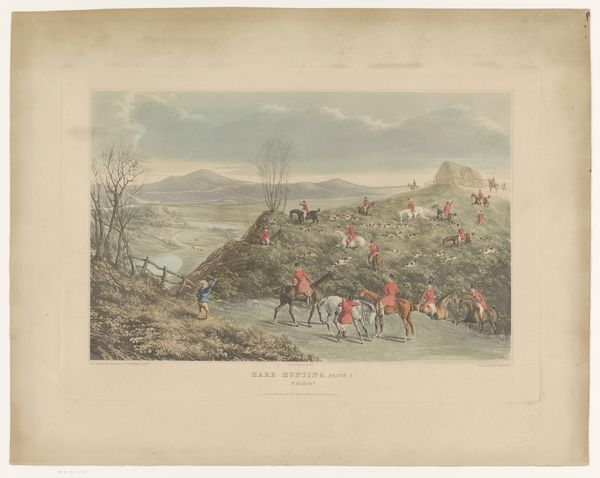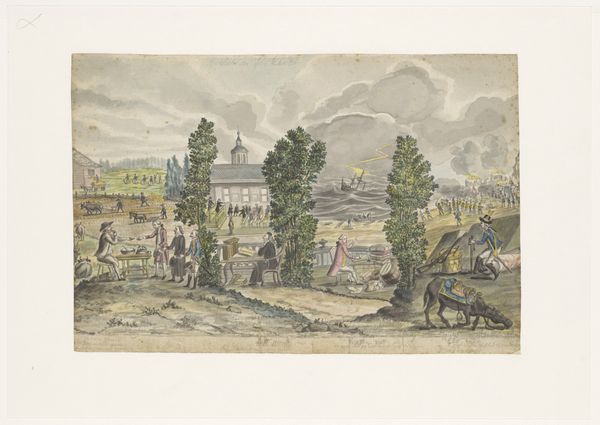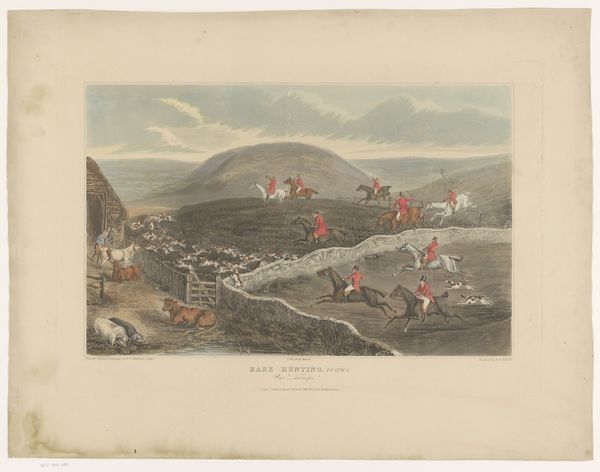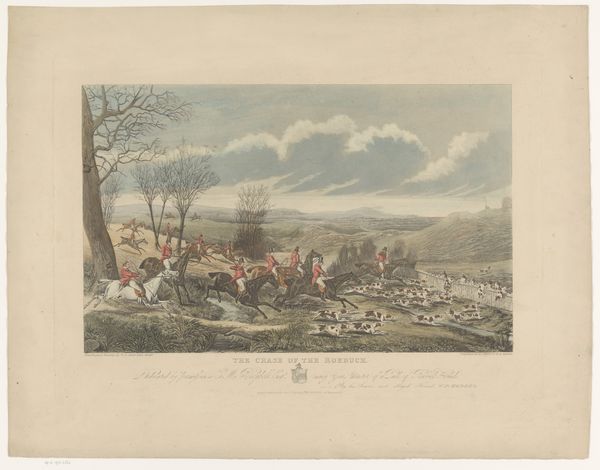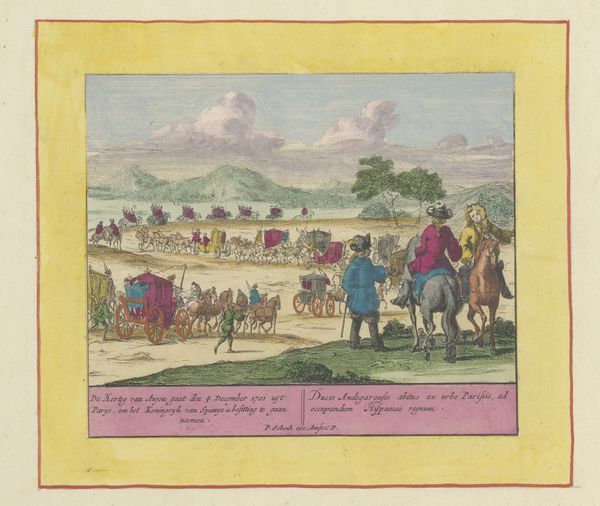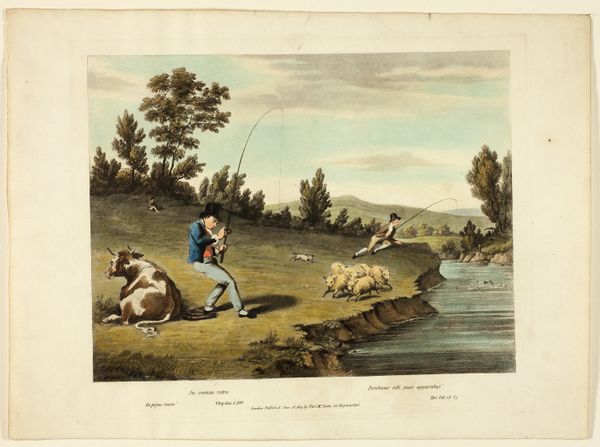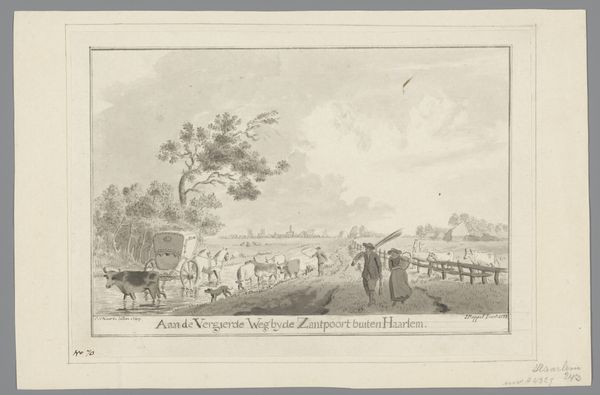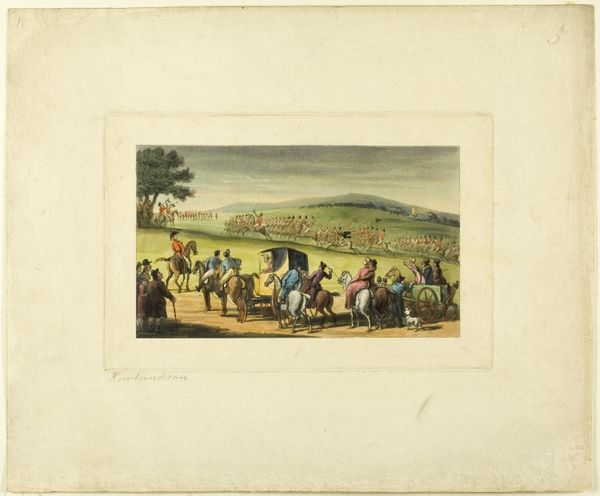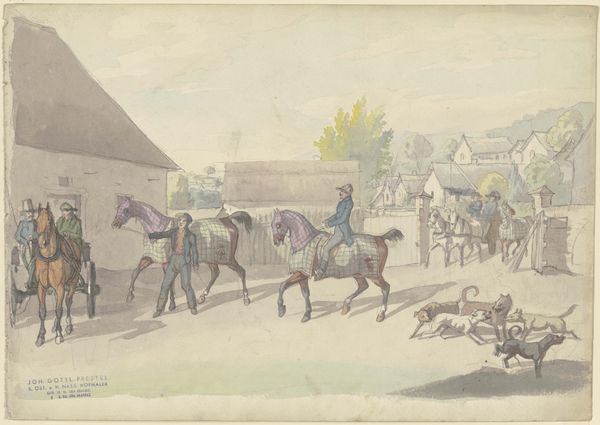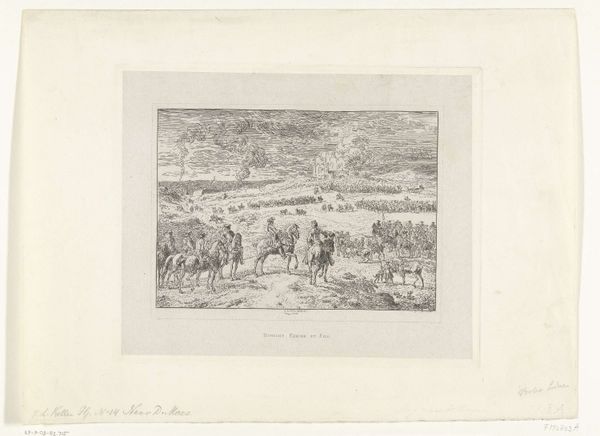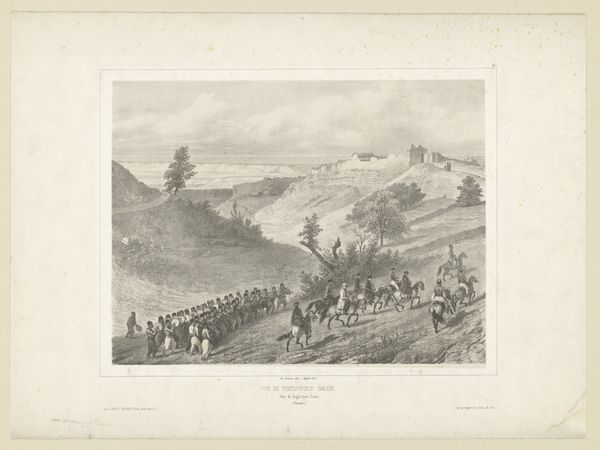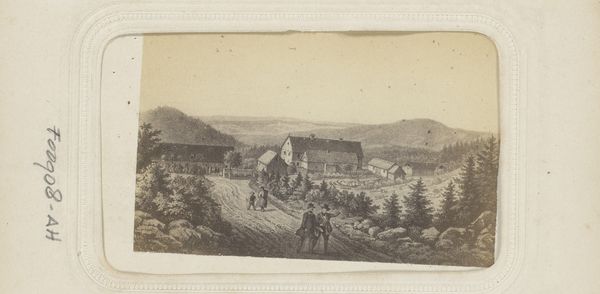
watercolor
#
water colours
#
landscape
#
figuration
#
watercolor
#
romanticism
#
genre-painting
#
watercolor
Dimensions: height 414 mm, width 593 mm
Copyright: Rijks Museum: Open Domain
Curator: This watercolor by Richard Gilson Reeve, created in 1831, depicts “Hunters and Hounds Surrounding a Dying Deer near Whatcombe House.” Editor: It’s idyllic at first glance. Rolling hills, grand estate... then you see the dying deer surrounded by baying hounds, the hunters watching on horseback. A harsh juxtaposition. Curator: Absolutely. The Romantic style emphasizes emotional intensity. Reeve sets a dramatic hunting scene against a picturesque landscape, amplifying the emotional experience for the viewer. Editor: And whose experience are we meant to identify with? The wealthy landowners, comfortably observing the brutality? Or the deer, cornered and terrified? The painting reeks of social stratification. The hunt, historically, was an aristocratic pastime, a marker of privilege. The dying deer becomes a potent symbol for the vulnerable, exploited by a powerful elite. Curator: The stag, though, traditionally symbolizes nobility, pride, and resilience. Its demise here then represents a fall from grace, or even the transience of earthly power. Consider the repeating image of the hunter in control over nature. It's interesting to think how often we glorify our position at the top of the food chain. Editor: True, that tension is present. Whatcombe House looms in the background, a testament to generations of inherited wealth. And the elaborate carriage on the right seems to highlight the distance between the powerful and those they hunt, both literally and metaphorically. Curator: Reeve utilizes a light color palette that actually softens the violence, doesn't it? Even the red coats blend in a sense with the overall green tones. The brushstrokes are delicate, particularly in rendering the landscape, which contrasts with the immediacy of the hunt itself. Editor: It does temper it, but that almost makes it worse. The artist romanticizes and sanitizes an act of violence, prettifying social inequity. The dogs appear almost cheerful about it. It is worth contemplating what this cheerful depiction symbolizes, given what’s going on in the foreground. Curator: This piece truly captures an era grappling with its identity. We have romanticism at odds with harsh realities, and aristocracy imposing itself on nature. Editor: It speaks to enduring questions about power, privilege, and our relationship with the natural world. A snapshot of history—both beautiful and brutal.
Comments
No comments
Be the first to comment and join the conversation on the ultimate creative platform.
